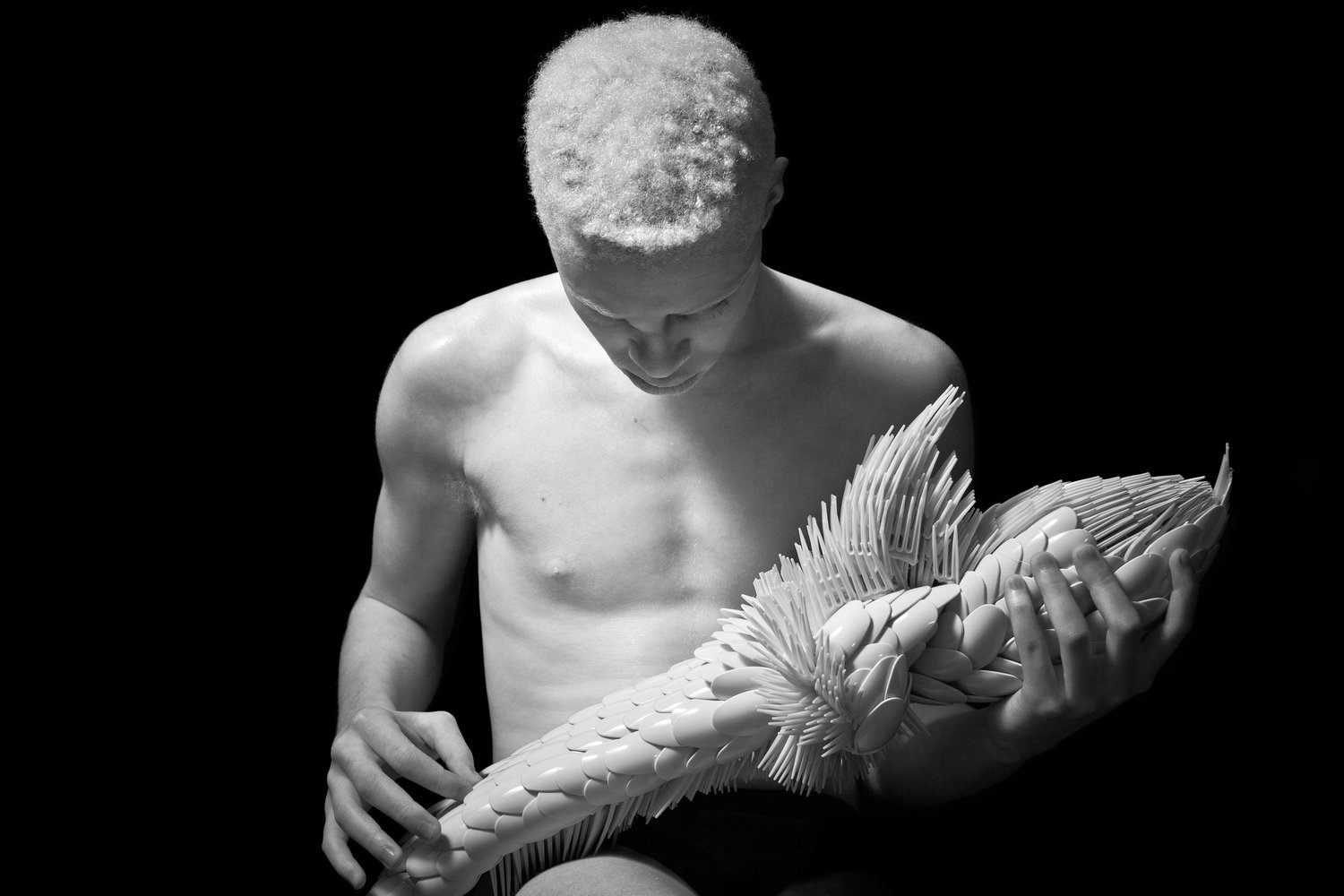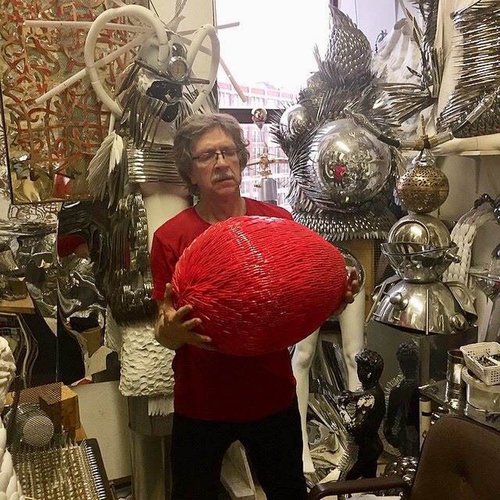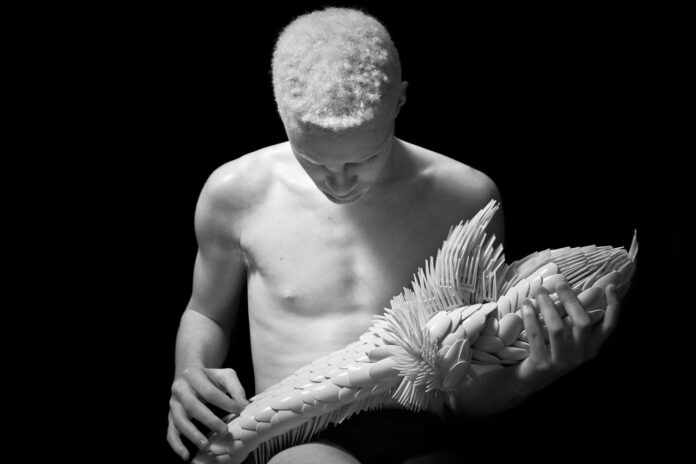
Sasha Meret was born in Romania in 1955, where he studied art from an early age and obtained both his B.A. and M.A. He arrived in New York in 1987 and studied printmaking at Columbia University, setting up his studio in Tribeca. He currently lives and works in NYC and has exhibits in Europe, Asia, and the U.S. Meret’s recent work applies a wide range of techniques that interact with genres such as fashion, science, essay and film.
His recent works are sculptural constructions of polystyrene spoons, forks and knives by the hundreds; some are white, some shiny, dark and metallic, often with whimsical layering. These forms grow into otherworldly half-animal, half-bird, alien, reptile predators; yet at the same time they a reduced to docile museum artifacts through the artistic process.
When you walk into Sasha Meret’s studio, it’s hard to distinguish if it’s an artist’s space or a collection of random metal parts. Two large windows light the room, illuminating the thousands of discarded scraps that come together to make intricate pieces of art. Knives and spoons come together to make armor, clustered spikes on a mannequin make something reminiscent of a bed of nails and golden wire hangs from the ceiling in a tangled mess.

The 64-year-old Romanian-born, Astoria-based artist, who created this inspired jumble, was once a successful magazine illustrator in the 1990’s. But more recently, he has built a surprising assemblage of his work from his 33 years in the art world. Some of his most well-known pieces are his collections of armor and statues made from discarded metal pieces that he has found off the street or in thrift stores.
The use of metal in his work distinguishes his work on its own, but something else makes it stand out even more: everything in this room was made since he was diagnosed 15 years ago with Parkinson’s disease, a condition known for intense tremors and stiffness.

After the initial shock of his diagnosis in 2003 and a period of adjustment to his condition, he discovered that when he is focused on his work, the tremors decreased substantially. Although the intensity of his tremors changes over time, they are a part of his everyday life.
When Meret realized that focusing on his art was a temporary remedy for the tremors, he became a workaholic, and barely slept—a development which troubled his doctors. Difficulty sleeping is a major non-motor symptom of Parkinson’s, says Chambers. For Meret, the lack of sleep doesn’t bother him since it lets him work at what he loves best—creating art.
Meret’s obsession with art isn’t new. He’s been at it since he was a child in Bucharest, Romania, he experimented with different kinds of art, mostly drawings with pencils and when he could find them, markers and watercolor. Then, 1981, he became a professional illustrator for publications like the New York Times, the International Herald Tribune and the Washington Post. While he worked as an illustrator for over 20 years, he also painted, sculpted and made prints.
„Working without a strict plan is pure joy! It is pure freedom! I have no idea in the morning what I will have at the end of the day. One can’t be wrong that way! As long as you can surprise yourself, having fun is a sure thing. I keep quoting this Pre-Columbian old saying “If you want to make the Gods laugh tell them you have a plan”, says Sasha.
In a way, collecting items that were thrown away, or considered finished by others, is a kind of commentary on himself and his disease. Just because something seems like it is broken or doesn’t have use doesn’t mean that’s necessarily true, he says.
“It’s a matter of what people value,” Meret said. “I take these pieces that are thrown away, I put them together and spray gold paint on it. And now it looks divine. I call all of my pieces divine. It’s really about anti-materialism.”

In the center of his studio mayhem is a piece Meret named the “Divine Penguin in Ceremonial Armor.” It is based off a Romanian story about a penguin and the journey it goes on. The armor is inspired by legendary warriors, known as bogatyr, from the epic East Slavic legends he read as a child.
„I do not intend to practice programmatic art and any manifestations of such are mostly the product of the subconscious. One can link a hint of Dada in my work to my Romanian ancestry, the movement having as catalysts several artists originally from Romania”.
“The Plastic Menagerie” /”Occupy Body” is the title of his current exhibit, lending his polystyrene sculptures to clothing and creating wearable armor-like pieces. His imagery reflects a lengthy spiritual exploration, a blend of European, African, Asian, and esoteric symbolism resulting in a highly personal visual language both erotic and exotic.
www.nycitylens.com
Read our Online Free October HORA edition here!




